The Role of Hydraulic Filters in Maintaining the Health of Your Equipment
Introduction
Definition of Hydraulic Filters
A hydraulic filter is a device that is used to remove contaminants, such as dirt, debris, water, and air bubbles, from hydraulic fluid in a hydraulic system. Hydraulic systems are used in a variety of industrial and commercial applications, including construction equipment, manufacturing machinery, and transportation vehicles. The hydraulic fluid is responsible for transmitting power and energy within the system, and it must be kept clean and free of contaminants.
Hydraulic filters use a porous material, such as paper, cloth, synthetic material, or wire mesh, to trap contaminants as the fluid passes through the filter. The size of the pores in the filter material determines the size of the contaminants that can be captured. The hydraulic fluid is pressurized as it moves through the system, which helps to force the contaminants through the filter material and trap them.
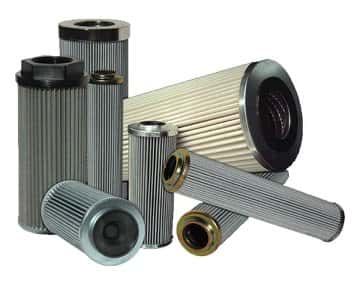
The primary function of a hydraulic filter is to protect the equipment and components in the hydraulic system from damage caused by contaminants. When contaminants are present in the fluid, they can cause wear and tear on the system, leading to costly repairs and downtime. By regularly replacing and maintaining hydraulic filters, the health of the equipment can be maintained and its lifespan extended.
Importance of maintaining the health of equipment
Contaminants in the hydraulic fluid can cause blockages and obstructions in the system, which can reduce the efficiency and performance of the equipment. In extreme cases, contaminants can even cause equipment failure, leading to costly repairs or replacement. By regularly replacing and maintaining hydraulic filters, the health of the equipment can be maintained and its lifespan extended.
Overall, hydraulic filters play a critical role in maintaining the health of equipment by removing contaminants from the fluid and protecting the system components from damage. By prioritizing hydraulic filter maintenance, equipment performance can be optimized and the risk of costly repairs and downtime can be minimized.
How hydraulic filters work
There are several different types of hydraulic filters, each with a specific function and location within the hydraulic system. Return line filters are installed in the system’s return line and are responsible for filtering the fluid as it returns to the reservoir. Suction filters are installed on the inlet side of the pump and are responsible for filtering the fluid as it is drawn into the system. Off-line filters are not connected to the main hydraulic system and are used to filter the fluid as it is being transferred between reservoirs or when the system is not in use.
The process of filtering the hydraulic fluid typically works as follows:
- The fluid enters the filter through an inlet port.
- It passes through the filter element, which is made of a porous material that traps contaminants.
- The clean fluid passes through the filter and exits through an outlet port.
- The contaminants are retained in the filter element and are prevented from entering the system.
Hydraulic filters are typically designed to be easily replaceable so that they can be regularly maintained and replaced as needed. It is important to follow the manufacturer’s recommendations for filter replacement intervals, as well as regularly inspect the filter element to ensure that it is in good condition and functioning properly.
The different types of hydraulic filters
Return line filters
A return line hydraulic filter is a type of filter that is installed in the return line of a hydraulic system. The return line is the part of the system that carries the fluid back to the reservoir after it has been used to perform work. The purpose of the return line filter is to remove contaminants from the fluid as it returns to the reservoir so that it can be cleaned and reused in the system.
Return line filters are typically located downstream of the system components, such as the pump, actuators, and valves. They are designed to capture contaminants that have been generated within the system, as well as any that may have entered the system from the environment. The filter element is made of a porous material, such as paper, cloth, synthetic material, or wire mesh, which traps the contaminants as the fluid passes through it.

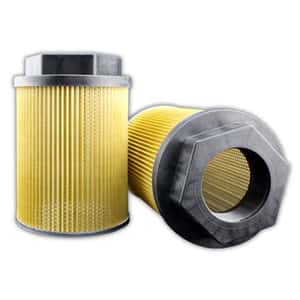
Suction filters
A suction filter is a type of hydraulic filter that is installed on the inlet side of the pump in a hydraulic system. The suction filter is responsible for filtering the fluid as it is drawn into the system before it is pressurized and used to perform work.
The purpose of the suction filter is to remove contaminants from the fluid, such as dirt, debris, and air bubbles, which can cause damage to the equipment and reduce the efficiency of the system. The filter element is made of a porous material, such as wire mesh, which traps the contaminants as the fluid passes through it.
Pressure filters
Pressure filters are devices that are used in hydraulic systems to remove contaminants from the fluid as it is pressurized in the system. Pressure filters are typically installed in the pressure line of the system, which is the line that carries the pressurized fluid from the pump to the actuators or other components that use the fluid to transmit power.
Pressure filters are designed to protect the system by removing contaminants that can cause damage or reduce the efficiency of the system. These contaminants may include dirt, dust, water, and other particles that can enter the system through various sources, such as the environment or the manufacturing process. Pressure filters are typically made of a porous material, such as paper, cloth, or wire mesh, which allows the fluid to pass through while trapping contaminants.
Pressure filters are typically sized based on the flow rate and pressure requirements of the system. They are also rated for a certain level of contamination, which determines the size and number of particles that they can effectively remove from the fluid. Pressure filters are typically designed to have a high dirt-holding capacity, which allows them to operate for longer periods of time without needing to be replaced.
Pressure filters are an important component of a hydraulic system, as they help to ensure that the system is protected from contaminants and operates at peak efficiency. They are typically used in conjunction with other types of hydraulic filters, such as return line filters and suction filters, to provide comprehensive protection for the system.
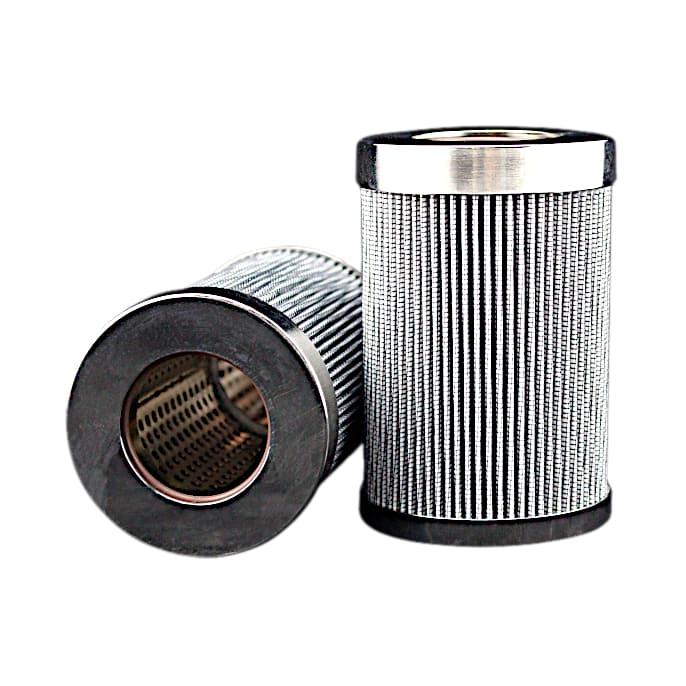
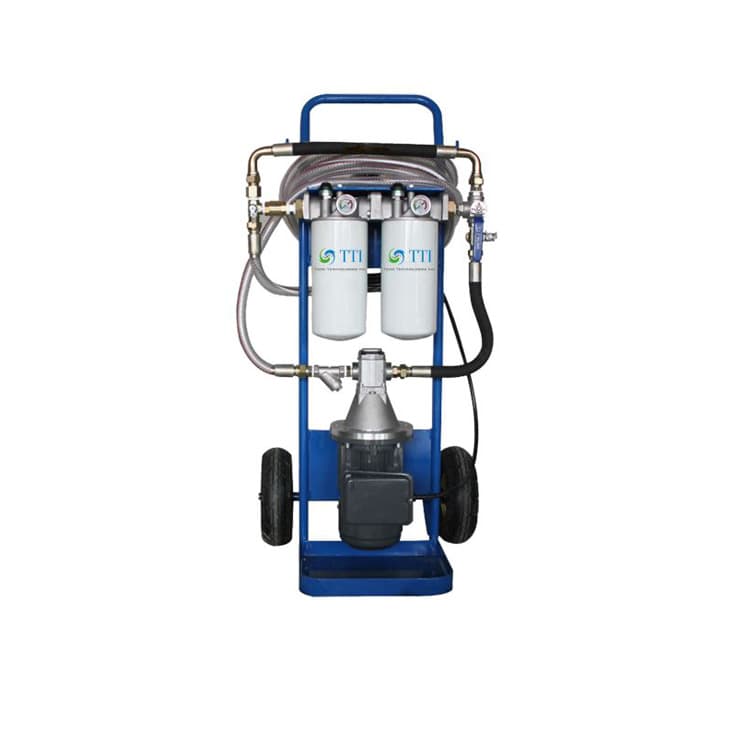
Offline filtration
An offline hydraulic filter is a type of filter that is not connected to the main hydraulic system and is used to filter the fluid when the system is not in use. Off-line filters are often used to filter the fluid as it is being transferred between reservoirs or to clean the fluid before it is used in a new system.
Off-line filters are typically portable and can be easily moved to different locations as needed. They are typically used in applications where the hydraulic system is not in constant use, or where the fluid needs to be cleaned and purified before it is used.
The process of using an offline filter typically involves connecting the filter to the fluid supply and outlet lines and then turning on the pump to circulate the fluid through the filter. The filter element, which is made of a porous material such as paper, cloth, or wire mesh, traps the contaminants as the fluid passes through it. Once the desired level of filtration has been achieved, the filter can be disconnected and the clean fluid can be used in the system.
Off-line filters are an effective way to maintain the purity of the hydraulic fluid and protect the equipment from damage caused by contaminants. They are also useful for extending the life of the fluid by removing contaminants that can cause degradation over time. It is important to follow the manufacturer’s recommendations for filter replacement intervals and to regularly inspect the filter element to ensure that it is in good condition and functioning properly.
The benefits of using hydraulic filters
There are several benefits of using hydraulic filters, including:
- Increased equipment lifespan: Hydraulic filters help to protect the equipment and components in the system from damage caused by contaminants, which can extend the lifespan of the equipment.
- Improved system efficiency: Contaminants in the hydraulic fluid can cause blockages and obstructions in the system, which can reduce its efficiency and performance. By regularly replacing and maintaining hydraulic filters, the system can operate at its optimal level of performance.
- Reduced maintenance costs: When contaminants are present in the hydraulic fluid, they can cause wear and tear on the system, leading to costly repairs and downtime. By regularly replacing and maintaining hydraulic filters, the risk of costly repairs and downtime can be minimized.
- Increased safety: Contaminants in the hydraulic fluid can cause equipment failure, which can be dangerous in certain applications. By regularly replacing and maintaining hydraulic filters, the risk of equipment failure can be reduced, leading to a safer work environment.
- Improved fluid purity: Hydraulic filters help to remove contaminants from the fluid, which can improve its purity and extend its lifespan. This can lead to reduced fluid costs and increased system efficiency.
Overall, hydraulic filters play a critical role in maintaining the health of equipment and optimizing system performance. By regularly replacing and maintaining hydraulic filters, equipment lifespan can be extended, maintenance costs can be reduced, and system efficiency can be improved.
How to select the right hydraulic filter
There are several factors to consider when selecting the right hydraulic filter, including:
- Type of equipment: Different types of equipment have different hydraulic system requirements, and it is important to select a filter that is compatible with the specific type of equipment being used.
- Type of fluid being used: The type of hydraulic fluid being used can affect the performance of the filter, so it is important to select a filter that is compatible with the specific type of fluid being used.
- Operating conditions: The operating conditions of the equipment, such as the temperature and pressure, can impact the performance of the filter. It is important to select a filter that is capable of operating under the specific conditions of the equipment.
- Contaminant size: The size of the contaminants that need to be removed from the fluid can affect the performance of the filter. It is important to select a filter with a pore size that is capable of removing the specific contaminants that are present in the system.
- Flow rate: The flow rate of the fluid through the filter can impact its performance. It is important to select a filter with a flow rate that is compatible with the specific needs of the system.
- Quality and reliability: It is important to select a filter from a reputable manufacturer that has a track record of producing high-quality, reliable products.
Overall, it is important to consider the specific needs and requirements of the equipment and the hydraulic system when selecting the right hydraulic filter. By carefully considering these factors, it is possible to select a filter that is capable of optimizing the performance of the system and extending the lifespan of the equipment.
Is an aftermarket filter just as good as an original filter?
An aftermarket hydraulic filter may be just as good as an original filter if it meets the same performance and quality standards as the original filter. This means that the filter has been designed and manufactured to the same specifications as the original filter, and has been tested to ensure that it provides the same level of filtration and protection as the original filter.
In order to determine whether an aftermarket hydraulic filter is just as good as an original filter, it is important to consider the following factors:
- Material quality: The filter media and other components of the filter should be made from high-quality materials that are compatible with the hydraulic system.
- Filtration efficiency: The filter should be able to effectively remove contaminants from the hydraulic fluid to the same efficiency level as the original filter.
- Flow rate: The filter should not significantly restrict the flow of hydraulic fluid and should allow the system to operate at the same flow rates as it would with the original filter.
- Compatibility: The filter should be compatible with the hydraulic system, and should not cause any issues such as leakage or system failure.
Overall, it is important to ensure that an aftermarket hydraulic filter meets the same performance and quality standards as the original filter in order to ensure that it provides the same level of protection and performance.
Maintenance and replacement of hydraulic filters
Regular hydraulic filter replacement is important because the filter element becomes clogged with contaminants over time, which can reduce its effectiveness and impact the performance of the system. As the filter becomes clogged, it becomes more difficult for the fluid to pass through it, which can lead to increased pressure and reduced flow rate. This can lead to reduced efficiency and performance of the equipment, as well as increased wear and tear on the system.
In addition, contaminants that are trapped in the filter element can break loose and enter the system, which can cause damage to the equipment and components. This can lead to costly repairs and downtime. By regularly replacing the filter, these contaminants can be removed from the system and the risk of equipment damage can be minimized.
Here are some tips for maintaining hydraulic filters:
- Follow the manufacturer’s recommendations for filter replacement intervals: It is important to follow the manufacturer’s recommendations for filter replacement intervals to ensure that the filter is functioning properly and the equipment is operating at its optimal level of performance.
- Regularly inspect the filter element: It is important to regularly inspect the filter element to ensure that it is in good condition and functioning properly. Look for signs of wear and tear, such as tears or holes in the filter material, and replace the filter if necessary.
- Use the correct filter for the application: It is important to use the correct filter for the specific application to ensure that it is capable of removing the contaminants that are present in the system.
- Store filters properly: When storing hydraulic filters, it is important to follow the manufacturer’s recommendations to ensure that they are protected from damage and deterioration.
- Use clean fluid: It is important to use clean, uncontaminated hydraulic fluid to ensure that the filter is able to perform optimally and extend the lifespan of the equipment.
- Regularly clean the filter housing: It is important to regularly clean the filter housing to remove any debris or contaminants that may have accumulated around the filter.
It is important to regularly inspect and maintain hydraulic filters to ensure that they are functioning properly and the equipment is operating at its optimal level of performance.
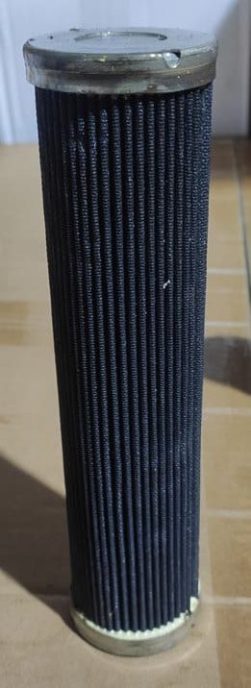
Conclusion
Hydraulic filters play a critical role in maintaining the health of equipment by removing contaminants from the hydraulic fluid, which is responsible for transmitting power and energy within the system. When contaminants, such as dirt, debris, and air bubbles, are present in the fluid, they can cause wear and tear on the system, leading to costly repairs and downtime. Contaminants in the hydraulic fluid can also cause blockages and obstructions in the system, which can reduce its efficiency and performance. By regularly replacing and maintaining hydraulic filters, the health of the equipment can be maintained and its lifespan extended. Hydraulic filters are available in several different types, including return line filters, suction filters, pressure filters, and offline filters, each with a specific function and location within the hydraulic system. By selecting the right filter and regularly maintaining it, equipment performance can be optimized and the risk of costly repairs and downtime can be minimized.
Maintaining the health of your equipment is essential for ensuring optimal performance and minimizing the risk of costly repairs and downtime. One of the most important aspects of equipment maintenance is regularly replacing and maintaining hydraulic filters. These critical components play a vital role in removing contaminants from the hydraulic fluid, which is responsible for transmitting power and energy within the system. By regularly replacing and maintaining hydraulic filters, you can protect the equipment and components in the system from damage caused by contaminants, extend the lifespan of the equipment, and improve system efficiency. In addition, regular hydraulic filter maintenance can reduce maintenance costs and improve the safety of the work environment. By prioritizing hydraulic filter maintenance, you can ensure that your equipment is operating at its optimal level of performance and minimize the risk of costly repairs and downtime.